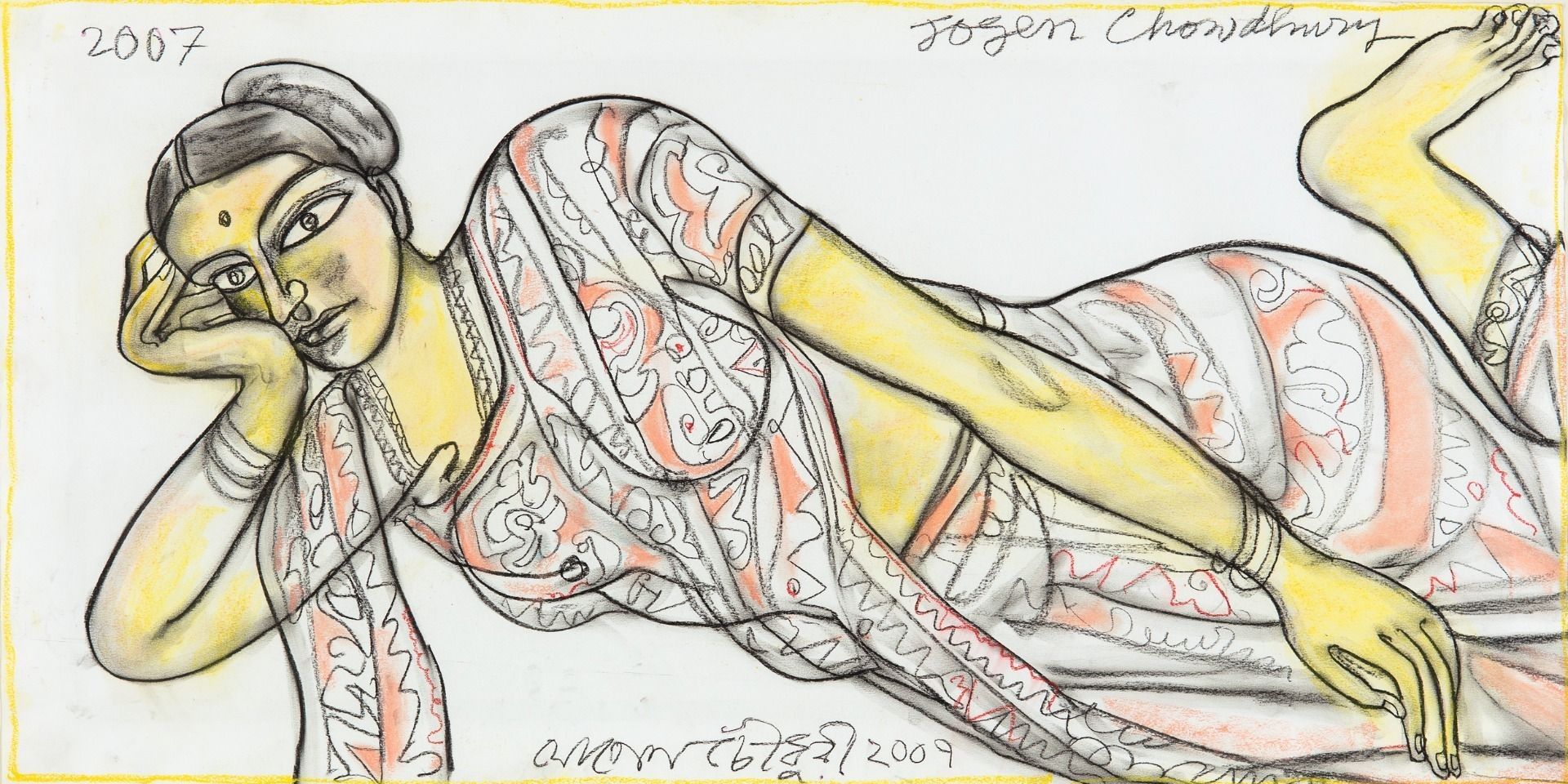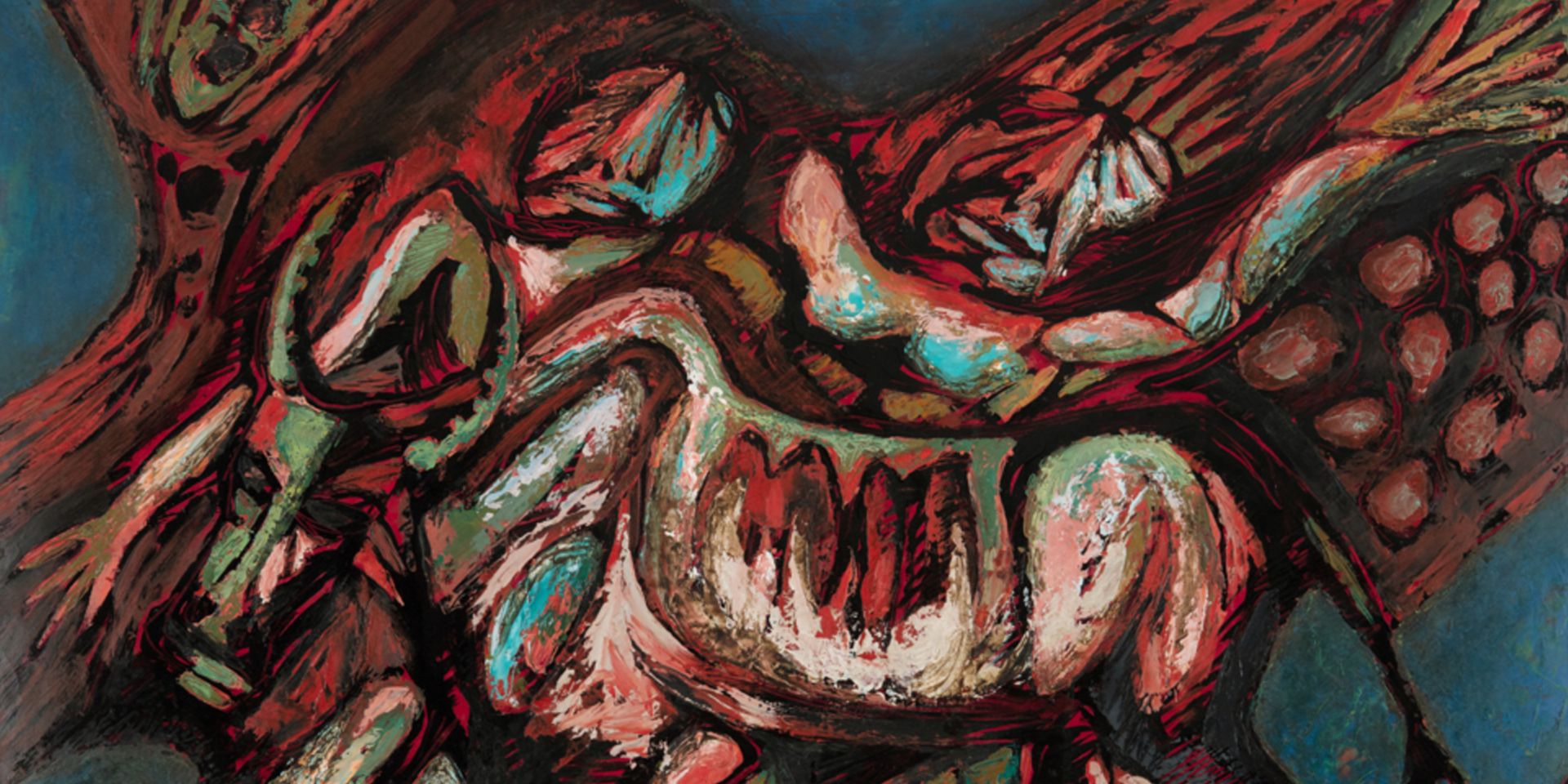Designing Calcutta: Navigating the city with architectural historian Swati Chattopadhyay
Designing Calcutta: Navigating the city with architectural historian Swati Chattopadhyay
Designing Calcutta: Navigating the city with architectural historian Swati Chattopadhyay
Designing Calcutta:
Navigating the city with architectural historian Swati Chattopadhyay

Bijan Choudhary, Protest at Ochterlony Monument (Shaheed Minar), c. 1960, Watercolour and charcoal on paper, 25.4 x 38.1 cm. Collection: DAG
Swati Chattopadhyay is one of the foremost scholars in the field of architectural history and theory. She has made significant contributions to the understanding of modern architecture, urbanism, and the intersections of architecture and politics.
Chattopadhyay's work often explores the social and cultural dimensions of the built environment, which she elucidates by looking at the various venues where art is practiced, from public transport to building walls.
One of her notable books is Representing Calcutta: Modernity, Nationalism, and the Colonial Uncanny (2005), in which she examines the architectural and urban transformation of Calcutta during the colonial period. Through this work, Chattopadhyay offers insights into how architecture can be a lens through which to understand broader social and political changes. She sat for an extended, reflective conversation with DAG in which she highlighted her own personal method for approaching architectural history often through unorthodox passageways, including artworks and literary texts, and her professed intention to ‘disturb’ the archives of colonial history. An edited version of the first part of this conversation appears below.
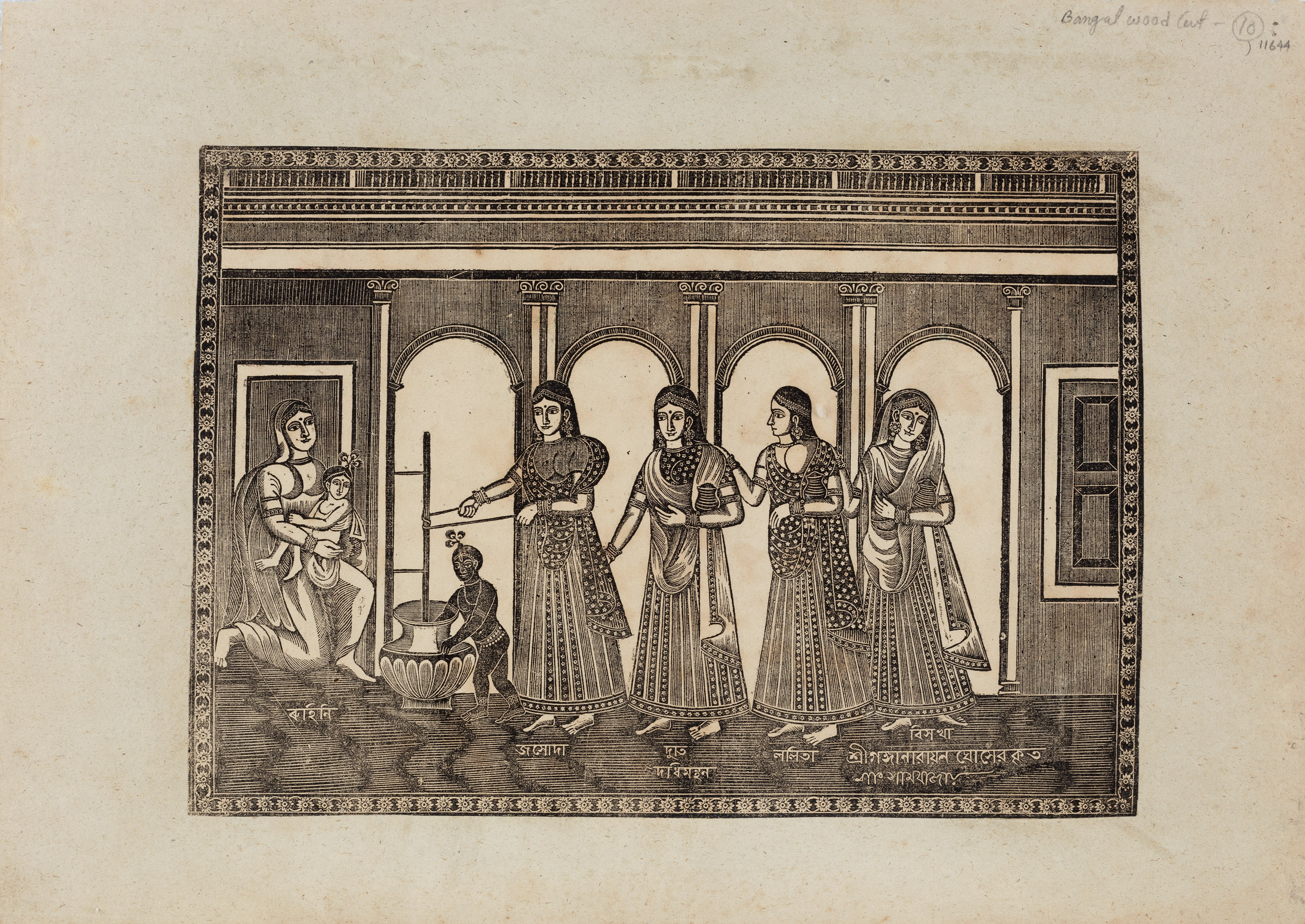
Anonymous, Untitled. Collection: DAG
Q. In Representing Calcutta, you have looked at the works of British colonial painters and talked about how they found it difficult to subsume the smells, the noises, the tactility of the cityscape in the sort of modern visual regime that they were working within. As a contrast perhaps, you have also looked at Abanindranath Tagore and explored a modern Bengali visuality through his work and other literary works. Can you tell us a little bit about your approach to visual analysis of artworks and paintings as a method in architectural history?
Swati Chattopadhyay: The first thing to ask perhaps is this: as an architectural historian ‘why do I look at paintings at all?’ I'm not an art historian. I have no training in art history. I'm trained first as an architect and then as an architectural historian. I practiced and went into architectural history in sort of a crooked way. Because, when I was practicing as an architect, I thought I needed a better understanding of social issues of architecture, which always interested me.
During our time as undergraduates at Jadavpur University, we undertook a valuable project of documenting Udayan, one of the residences in Santiniketan's Uttarayan complex, associated with Rabindranath Tagore. Back then, one could freely explore all the buildings on the Santiniketan campus, without entry fees, fostering a fantastic and informal learning experience. Research methods were not formally taught, and the architectural history instruction left much to be desired. The architectural history curriculum at Jadavpur primarily drew from colonialist sources such as the works of James Ferguson and Bannister Fletcher. These works framed the value of Indian architecture, when acknowledged at all, through medieval monuments and temples. As aspiring architects, this perspective did not align with our interests. The program itself was strongly influenced by the Bauhaus curriculum, as were most architecture programs of that era worldwide. Consequently, the prevailing narrative about Indian architecture was predominantly colonialist and remained largely unchallenged until our generation of architectural historians came along.
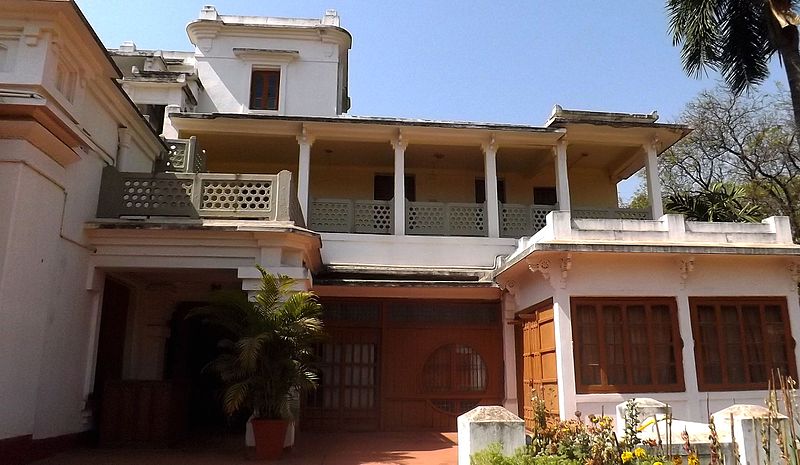
Udayan, Santiniketan. Image courtesy: Wikimedia Commons
Ironically perhaps, in our approach to Udayan as a building and a subject of analysis, what proved beneficial was our lack of formal preparation, apart from our habitual familiarity with Bengali literature. Consequently, we improvised a research method. Our primary skill, perhaps the only one we were explicitly taught, was drawing. The project was a collaborative effort that earned a national award, validating the usefulness of our work.
In essence, the lack of formal training in research methods meant we weren't constrained by disciplinary biases, including any consideration of colonialist perspectives. The latter wasn't something we actively contemplated. It's worth noting that I didn't pursue this line of inquiry further because architectural history wasn't recognized as a distinct discipline in India then, and even now in India, it doesn't exist as such. Art history, however, does.
It took some time for me to choose what I should be studying. The reason I opted for Calcutta was that, in a US-based PhD program, I realized I would need to commit to a subject for several years, and the one area I felt confident I could sustain interest in was something related to Calcutta. This decision wasn't particularly well-informed; rather, it was a recognition of my own limitations rather than my potential.
The training I received at Berkeley was exceptional and provided me with a strong foundation in the social history of architecture. During my time in graduate school, I realized that when discussing Calcutta, it was essential to address visual representation. This is because written rhetoric and visual rhetoric intertwine and are co-constitutive. I had to bring together architectural analysis with the analysis of paintings. This informed by later spatial approach to paintings. While art historians might pose specific questions about pictorial form and social relations, my focus lies in the spatial arrangement of the pictorial elements. I contemplate how one might inhabit those spaces.
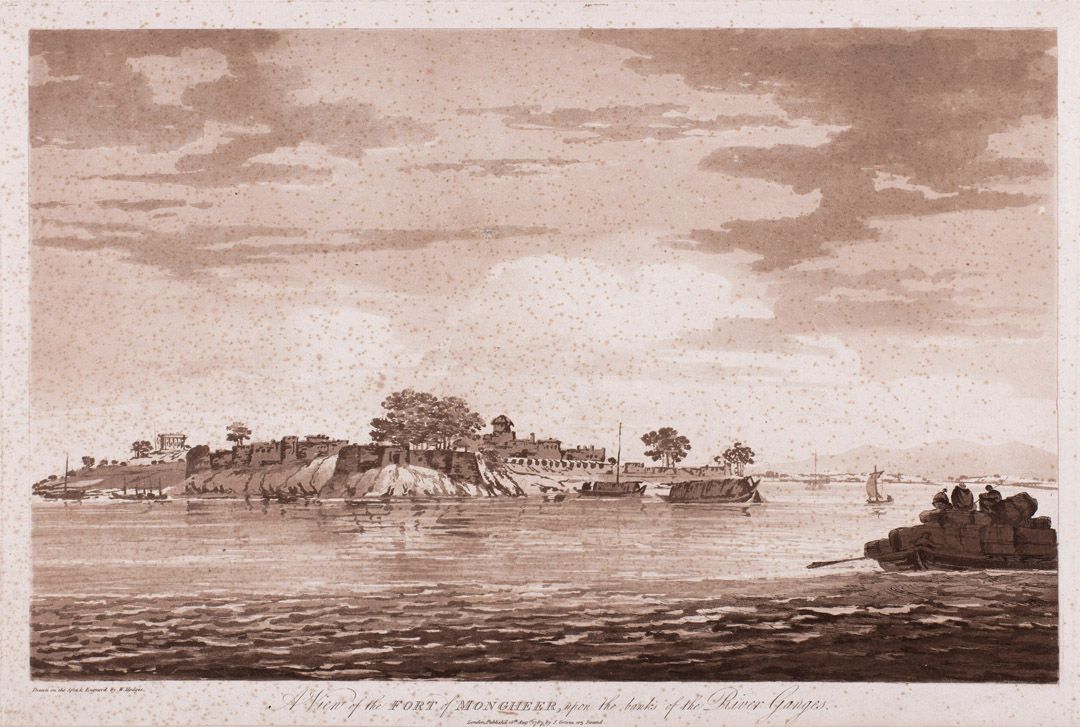
William Hodges, A View of the Fort of Mongheer, upon the Banks of the River Ganges, 1787, Soft-ground etching and aquatint on paper, 29.2 x 45.0 cm. Collection: DAG
For instance, in what had commonly been described as picturesque paintings from the colonial period dating from the late 18th to the early 19th century, a clear distinction stood out for me: the tradition of the picturesque in England and what was unfolding in India were not equivalent. However, to explain the nuances of what was occurring, I had to analyse written texts. I had to acquire techniques of literary analysis, merging them with visual and architectural analysis. I sought to thoroughly comprehend the distinctive aspects of colonial architecture and the environment, recognizing that they were specific to their time and place, shaped by a particular set of social relations.
By the time I embarked on my dissertation research in the early 90s, there already existed a robust literary foundation to postcolonial studies. Subsequently, historians engaged in stimulating discussions across various cultural and political domains. Scholars such as Partha Chatterjee, Dipesh Chakraborty, and others effectively navigated between literary and historical archives. I shared this inclination, having grown up immersed in a specific literary corpus. This shaped my critical approach—an aspect we could perceive as either a baggage or an inheritance.
In approaching the visual, my aim was to stretch the conventional boundaries of visual analysis. When examining visual materials, it's crucial to acknowledge that spatial experiences extend beyond the visual realm. It involves a sensory understanding of space, requiring inferences from paintings about the environment—whether it involves smells, sounds, tactility and other non-visual aspects. This includes considerations of how one moves through space, how space envelops individuals, and how spaces are interconnected.

|
Abanindranath Tagore, The Passing of Shah Jahan, Chromolithograph on paper. Collection: DAG |
Spatial experience is contingent upon one's status as a subject. Yet, who qualifies as a subject, and who enjoys the privilege of subjecthood? Answering these questions necessitates a nuanced comprehension of subjectivity that implies a will and a sense of selfhood. Enslaved individuals, the subaltern and marginalized are not bestowed this privilege. Their everyday precarity robs them of this sense of self. Subjectivity is not universally categorical. It doesn't neatly align with categories like gender or social status, as we all inhabit multiple identities and transition between various roles.
Through my work, my goal is to comprehend how social relations and material interactions unfold in specific situations. The space could be a bus, a building, an interior, or a bookshelf. While they do perform differently, they are inherently spatial—situation-specific and site-specific.
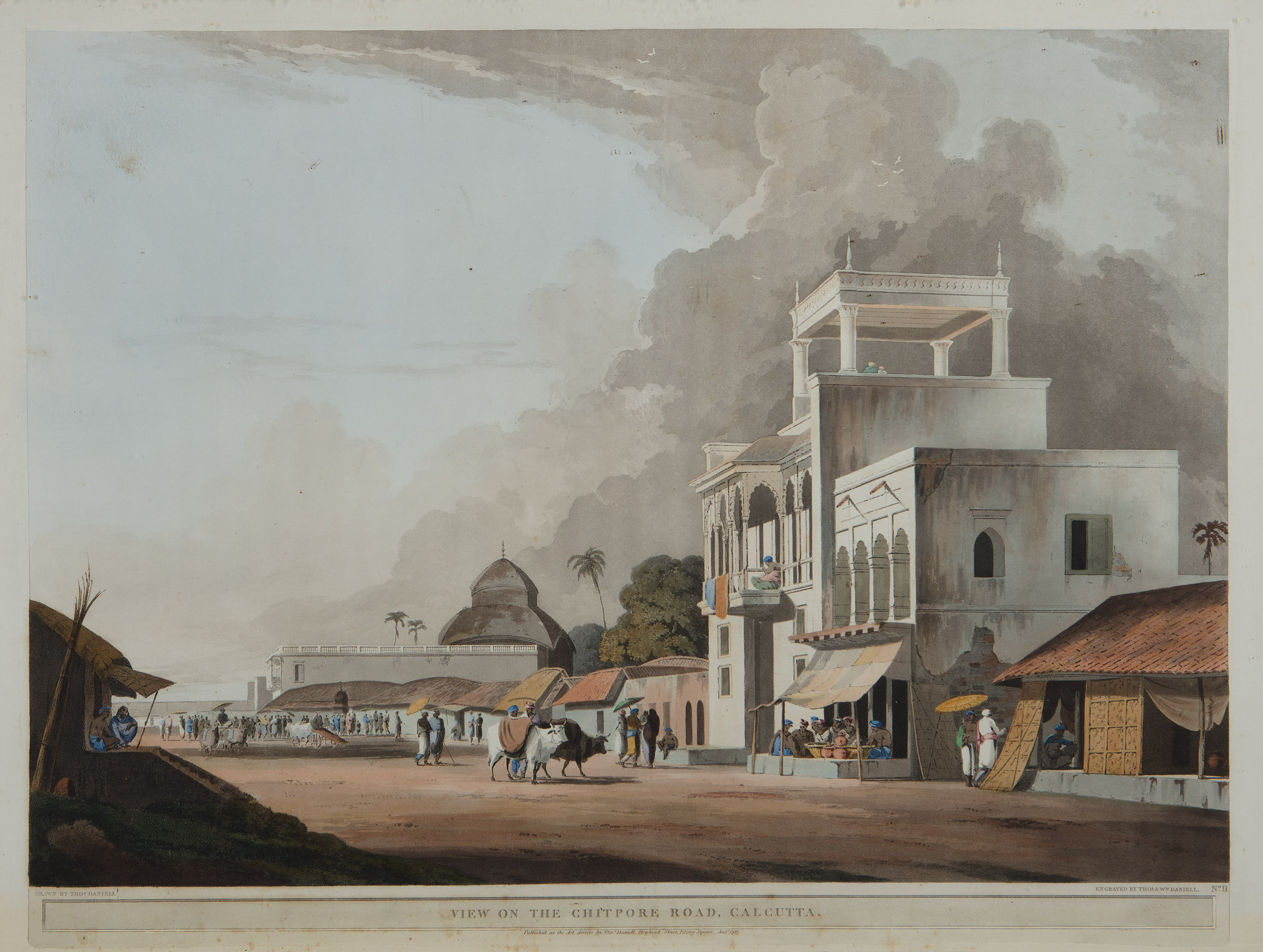
Thomas Daniell And William Daniell, View on the Chitpore Road, Calcutta, Handtinted engraving on paper. Collection: DAG
Take the example of automobile art. When automobile art gained popularity and was showcased in museums, it changed the meaning of the art form. Changing the site or the creator significantly alters the meaning. I find it surprising at times that curators overlook these social specificities, which are crucial to me. In my perspective, the visual is always filtered through the social in a broader sense.
It is not just a matter of what you look at, but how you look at it. I can approach automobile art and Abanindranath's work in the same manner if I choose to. This doesn't mean they lend themselves to the same iconographic analysis; rather, I am interested in asking what happens if we pose a similar set of questions in terms of production and consumption to these works that arise from different historical situations? It's a specific approach to asking those questions that permeates my work and connects to my understanding of the built environment as an architect and an architectural historian.
Q. My next question relates to the Kalighat paintings that you have looked at in Representing Calcutta. In Abanindranath’s case, you have studied his views on nationalism, and his views on the public culture of Calcutta quite extensively in your analysis of his Arabian nights series. But in the case of Kalighat painters, they are pretty much always anonymous. And so, how would you approach the idea of subjectivity in the case of Kalighat painters?
Swati: This goes back to what I mentioned earlier: who constitutes the subject? Whose subjectivity are we referring to? Is the concept even beneficial in certain instances? Presuming subjectivity implies assuming a well-defined fully formed subject—an individual with a political will. This notion stems from Enlightenment ideals.
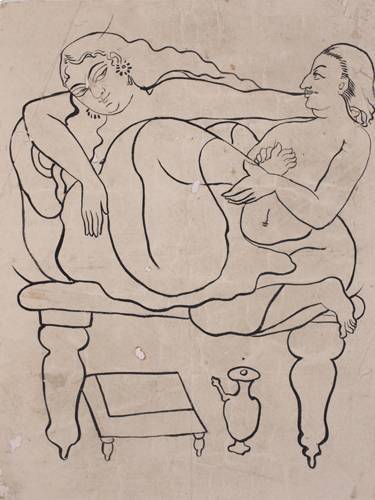
|
Anonymous (Kalighat Pat), Untitled. Collection: DAG |
Let me make a distinction to amplify this point. When I look at figures like Binodini (the actress), for instance, I explore how she is shaping a sense of self as a subject. Her project is political. This is markedly different from the case of Kalighat painters. I find it unproductive to think about the subjectivity of Kalighat painters in order to reach the political import of their work. These individuals possess specific skills and sell commodities in the market, yet essentially what they are doing is undertaking representational acts. The classic definition of representation is twofold: one aspect involves depiction, while the other entails representation as political proxy. These two dimensions converge, indicating a political involvement. While it's uncertain whether every Kalighat painting carries a political engagement, some explicitly address social and political issues.
I can build my argument based on that approach. When examining marginalized communities or actors in fields like art, art history, and architectural history, the conventional approach involves seeking out, for example, (marginalised) craftsmen or architects to write about, thus expanding the canon. However, I'm not interested in expanding the canon, as doing so inadvertently validates it.
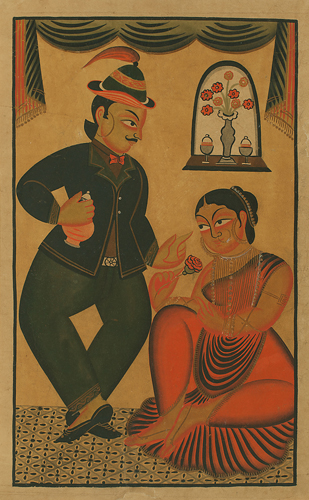
|
Anonymous (Kalighat pat), Untitled. Collection: DAG |
Q. You have discussed their representations of interiority and the relationship between objects and bodies—how do you look at the configuration of interiority in Kalighat paintings as something that was made for the consumption of a public gaze, more specifically a male public gaze?
Swati: Kalighat paintings encompass a broad spectrum. Not all paintings cater exclusively to the male gaze. It's important to acknowledge that Kalighat paintings often feature gods and goddesses, making them accessible to a diverse audience. However, there exists a specific genre or sub-genre within this art form that caters to the male gaze and targets a particular clientele. I approach these paintings as counter-arguments. Just because they are intended for a specific gaze doesn't mean they lack critique. In fact, these paintings serve as explicit critiques of masculinity and femininity. The furniture and other visual elements work as gestures contributing towards these critiques: they create the space—in a capacious sense of the term—that help articulate the critique.
I don't require a direct correspondence between what I observe in the paintings and what I see in the actual building interiors. One example I often discuss is the chair. I question the function of a chair and contemplate what it signifies when a woman is depicted sitting cross-legged on one during that period. When a woman was represented sitting on a chair with a hookah in hand, it was a visual cue meant to convey her identity as a courtesan or a sex worker. A chair signalled interior space, but everyday use of the chair or such modern furnishing weren’t commonplace at that time. Only some individuals could afford them, and fewer actually used them. What's significant is that the characters in the paintings were meant to transcend certain boundaries between the domestic and public spheres. They were, in essence, represented as pioneers in breaking social codes, taboos, and that's how I began to approach the subject.
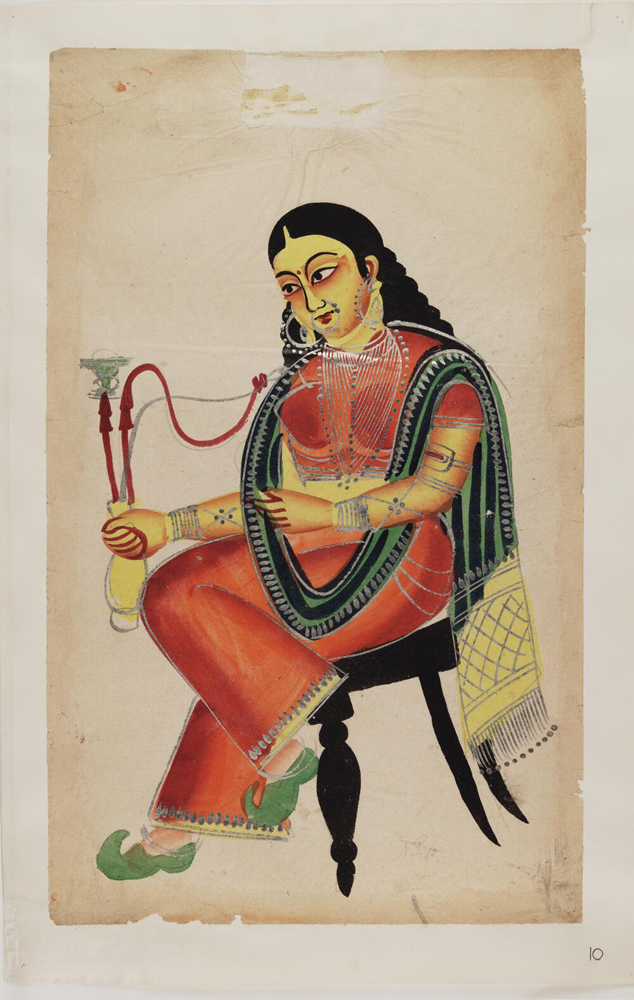
|
Kalighat pat. Image courtesy: Wikimedia Commons |
This line of thought is evident in Gaganendranath Tagore's characters/ caricatures, which ultimately cease to be amusing. Gaganendranath's depictions are profoundly sexist. Nevertheless, it was part of his political project, driven by a genuine discomfort with the boundaries that were being breached. This space of male anxiety is evident in the depiction of characters who breach the boundaries.
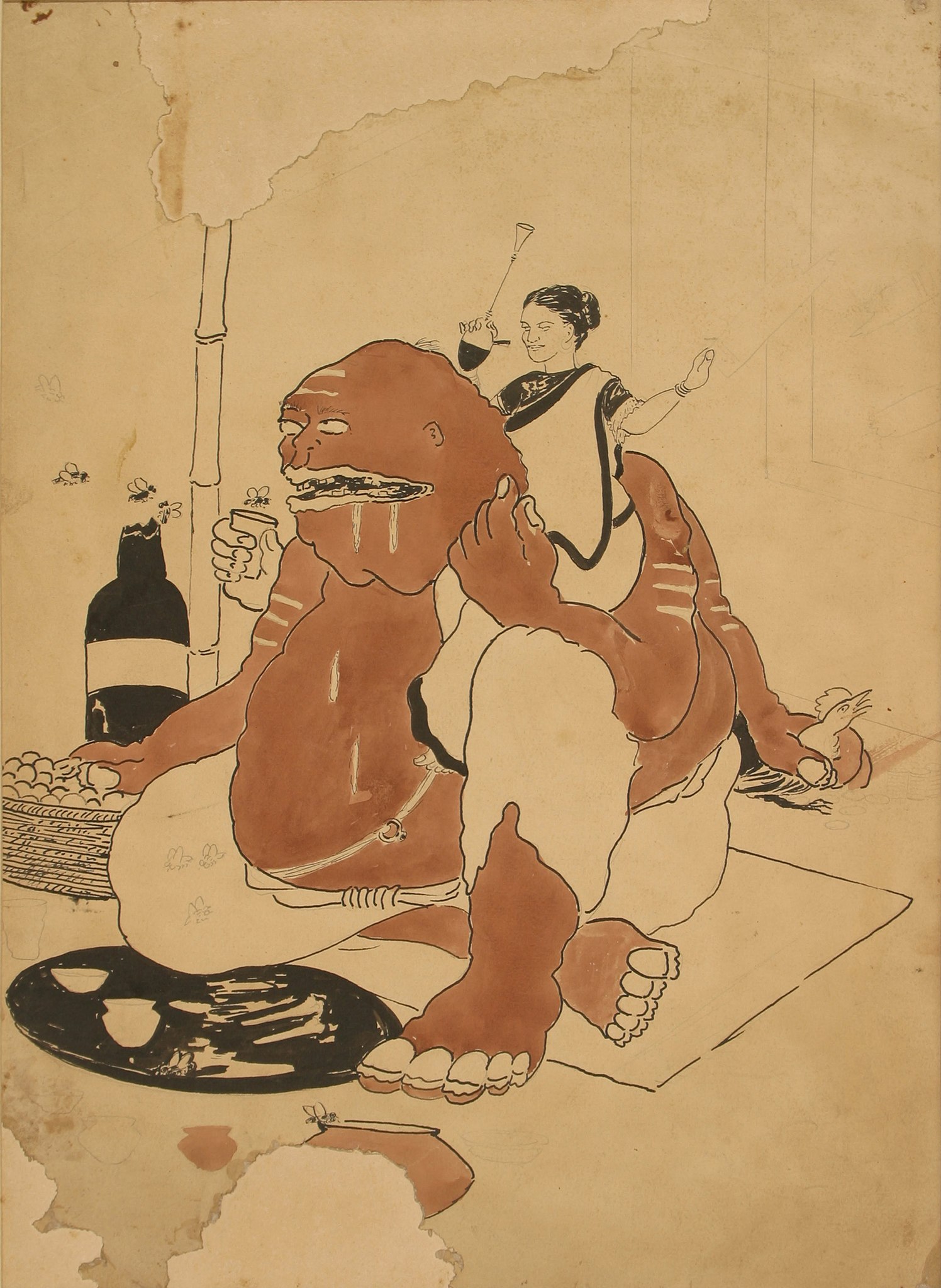
|
Gaganendranath Tagore, Brahmin of Kaliyuga, 1917. Image courtesy: Wikimedia Commons |
My primary goal in that book was to explore the interactions between colonial and nationalist representations and understand their implications for city spaces. I needed to take an additional step and consider not only the caricatures but also how to comprehend the exclusions and marginalisations, whether of servants or women (regardless of their class). The challenges posed by the historical archive are substantial, given its privileging of dominant voices. In my book, Small Spaces: Recasting the Architecture of Empire (2023), for instance, I engage in what I term 'unarchiving.' This involves grappling with a dominant colonial archive that presents itself in a singular authoritative form. The question then becomes, how do we conceptualize evidence? What qualifies as evidence? How do we discover how the evidence was framed? What was left out, excised?
In the book, some may find it discomforting that I introduce my personal or family history, as I did in the last chapter of Representing Calcutta. I undertake this as a political project—to reflect on and be self-conscious about my positioning and, simultaneously, to allow the insights gained through conversations with family members and other individuals to disrupt the composure of the colonial archive. I believe they contribute to what I would describe as troubling the archive.
related articles

Conversations with friends
The Making of the Dhaka Art Summit: Behind the scenes with the Curator
February 01, 2023
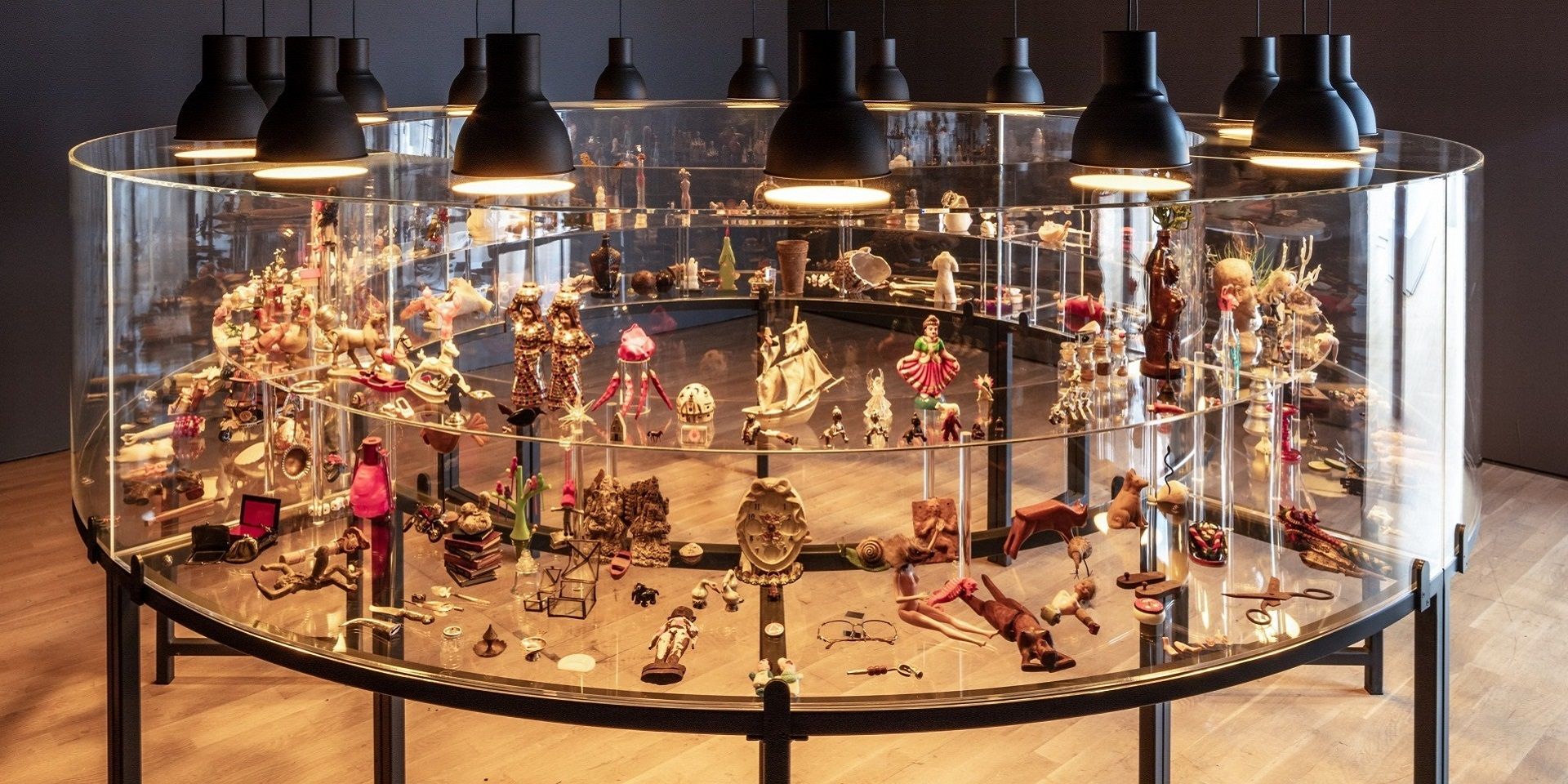
Conversations with Friends
Conscious Collecting with Asia Art Archive and Durjoy Rahman
Editorial Team
March 01, 2023

Conversations with Friends
Mysteries of Indian Art: A Conversation with Mamta Nainy
The Editorial Team
May 01, 2023

Conversations with Friends
Debra Diamond on Royal Udaipur painting at the Smithsonian
Ankan Kazi
June 01, 2023

Conversations with Friends
Imaging Water: A Conversation with the Smithsonian's Carol Huh
Ankan Kazi
July 01, 2023
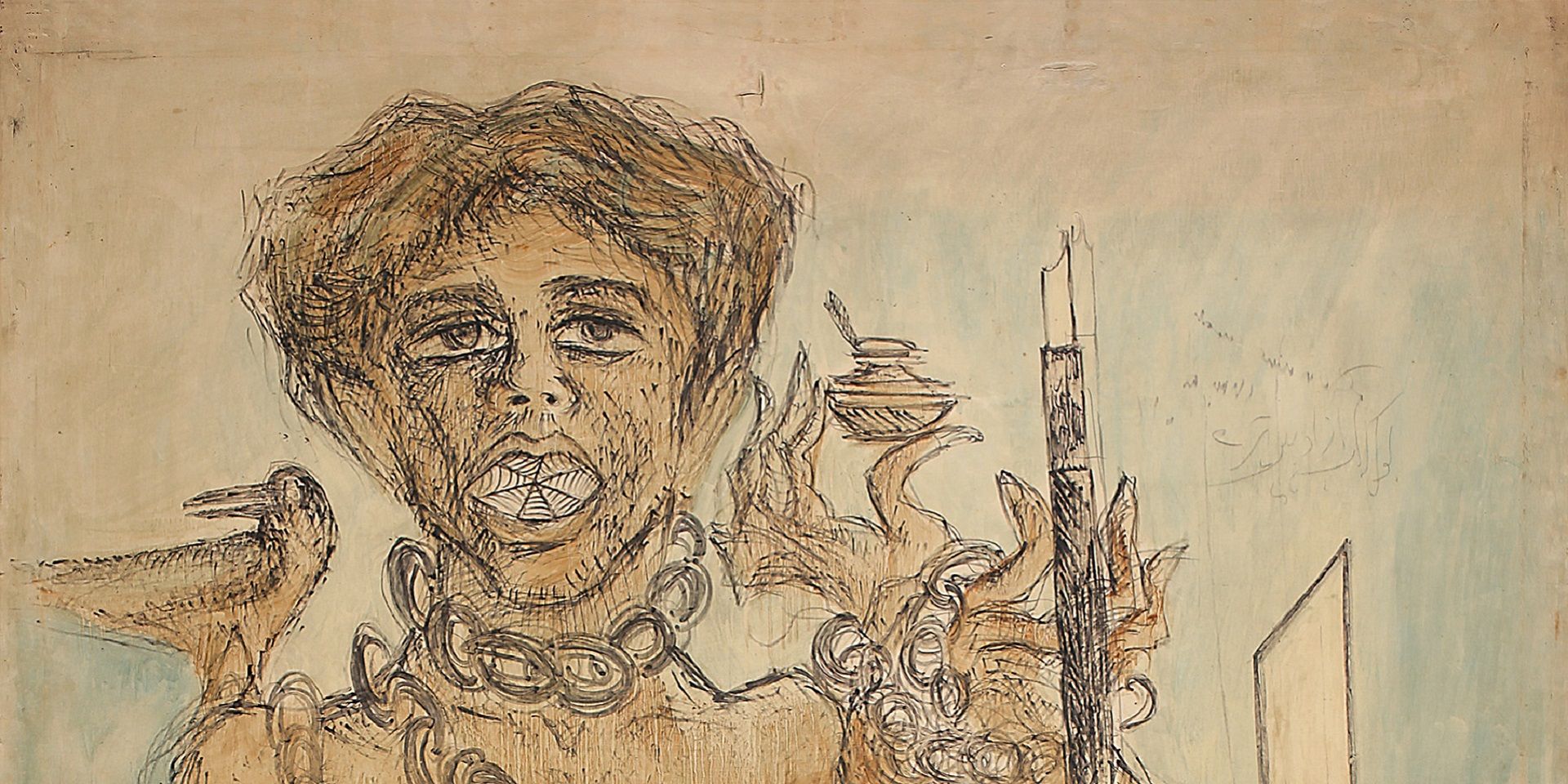
Conversations with Friends
Debating secularism in South Asian Art with Tapati Guha-Thakurta
The Editorial Team
August 01, 2023

Conversations with Friends
Remembering Ambadas with art critic Prayag Shukla
Ankan Kazi
August 01, 2023

Conversations with Friends
Discovering the lives of Bengal's women artists with Soma Sen
Ayana Bhattacharya
September 01, 2023

Conversations with Friends
Debating secularism in South Asian Art with Dr. Guha-Thakurta II
The Editorial Team
September 01, 2023
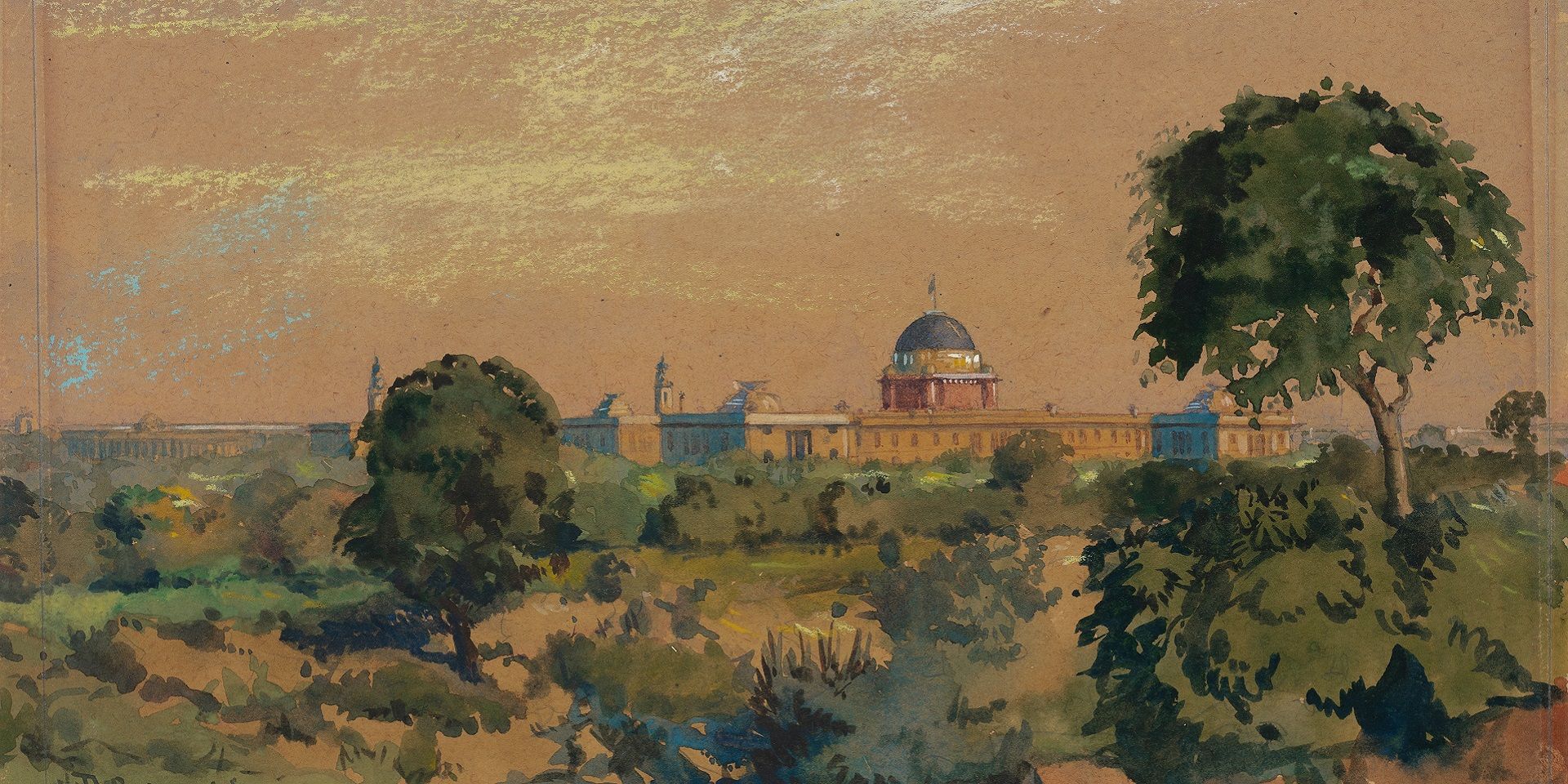
Conversations with Friends
Becoming New Delhi: A Conversation with Swapna Liddle
Ankan Kazi
October 01, 2023

Conversations with Friends
Visualising the Freedom Struggle: A conversation with Vinay Lal
Ankan Kazi
November 01, 2023
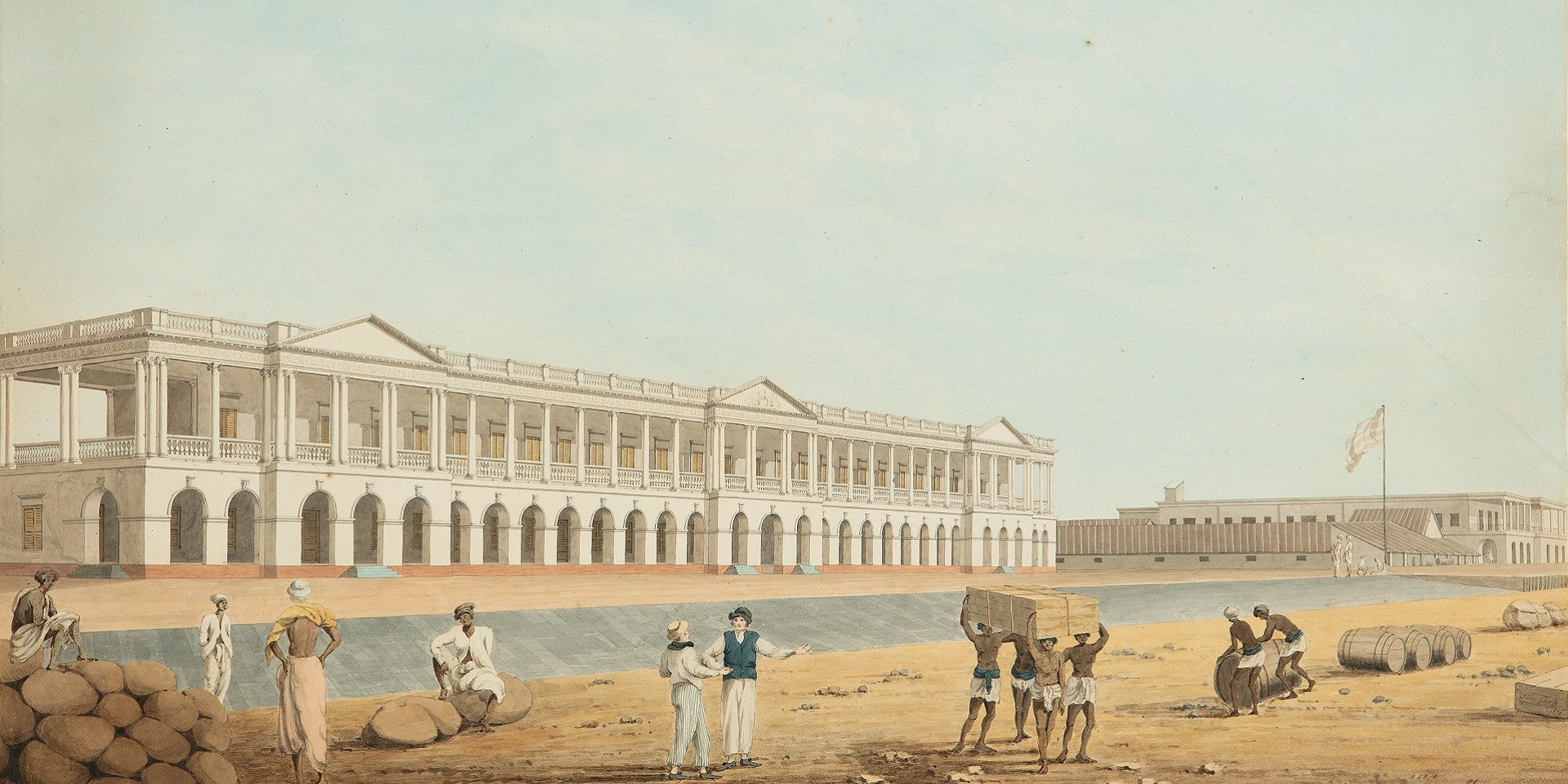
Conversations with Friends
Building an Empire: A Conversation with Rosie Llewellyn-Jones
Ankan Kazi and Giles Tillotson
December 01, 2023

Conversations with Friends
Unarchiving the City: A Conversation with Swati Chattopadhyay
Shreeja Sen and Vinayak Bose
January 01, 2024
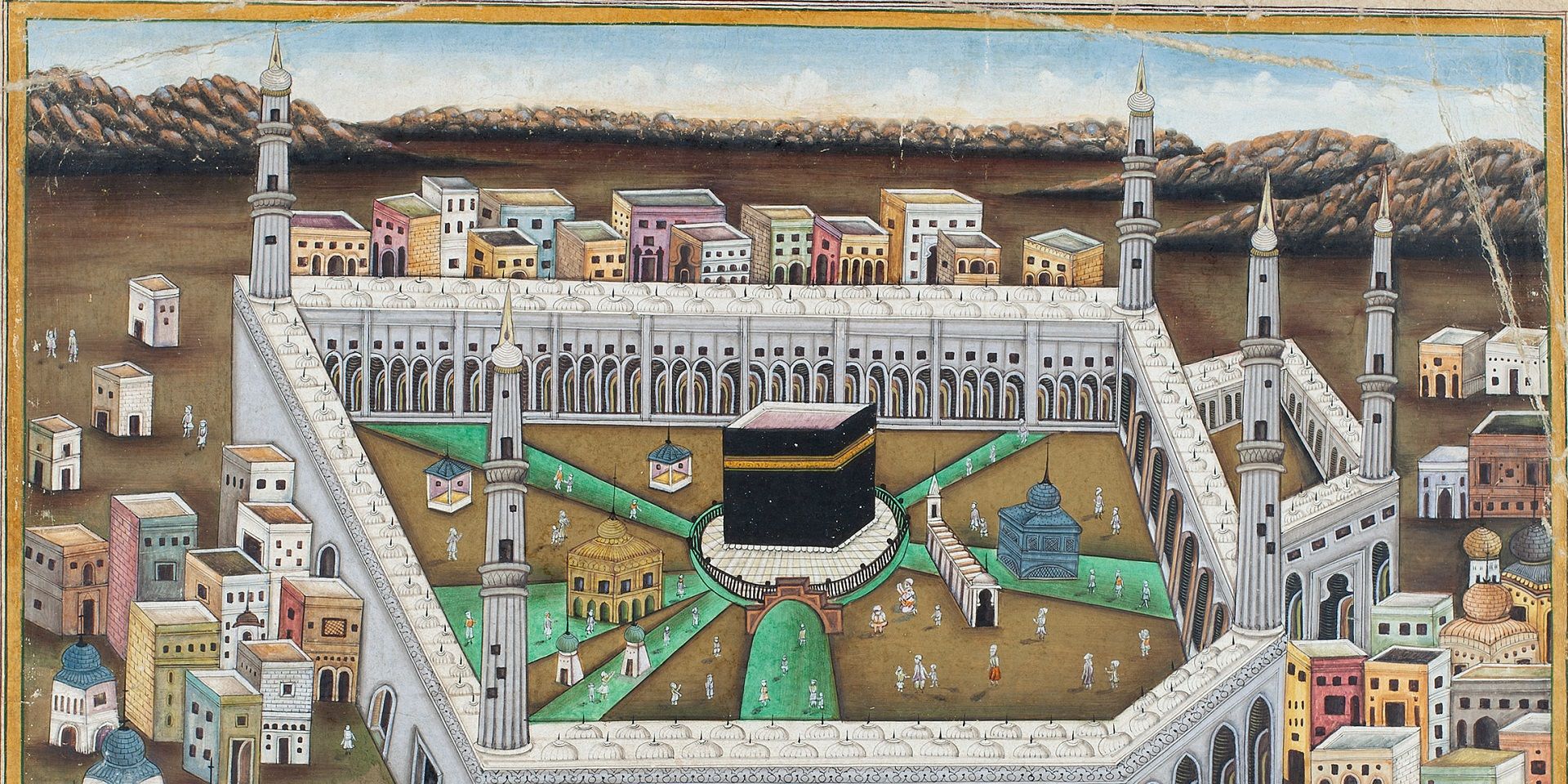
Conversations with Friends
Partition and Popular Art: A Conversation with Yousuf Saeed
Ankan Kazi
January 01, 2024

Conversations with Friends
Singing to Kali: A Conversation with Rachel F. McDermott
Ankan Kazi
February 01, 2024
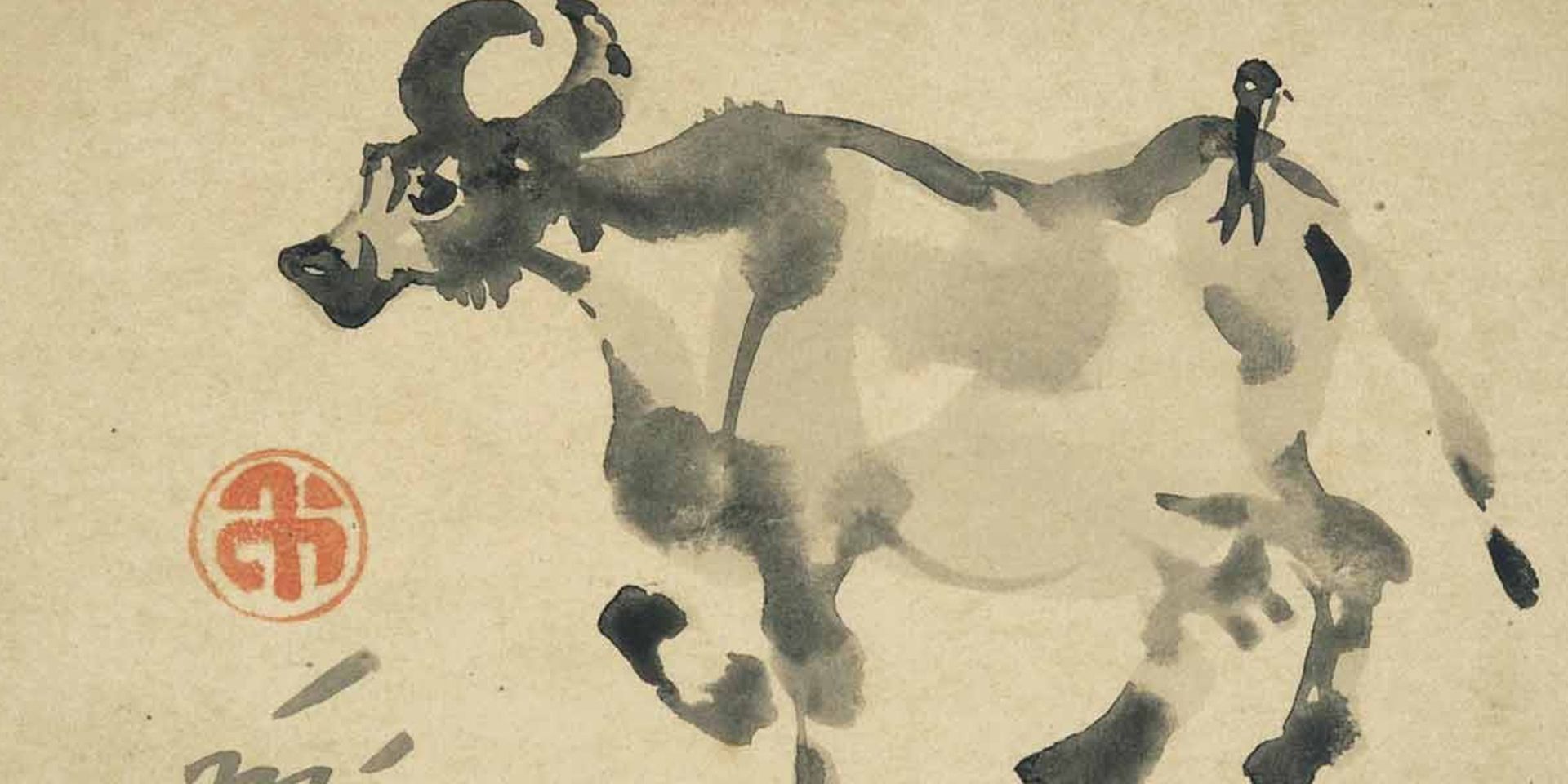
Conversations with Friends
The Asian Moment: A Conversation with Sugata Bose
Ankan Kazi
May 01, 2024
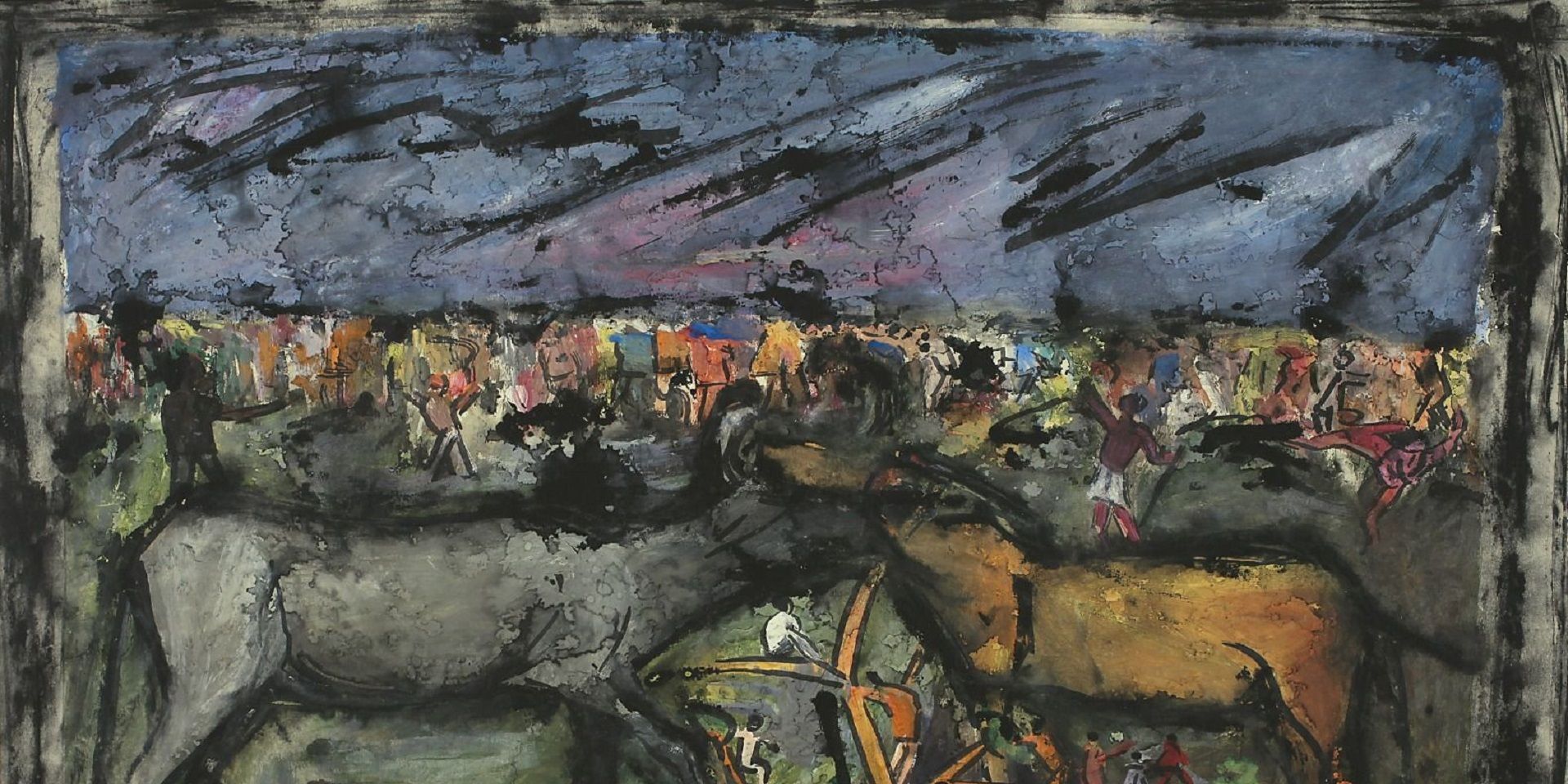
Conversations with Friends
Rudi von Leyden's Indian Art Adventures: With Reema Desai Gehi
Ankan Kazi
June 01, 2024

Conversations with Friends
Objects and the Museum: A Conversation with Sudeshna Guha
Ankan Kazi
July 01, 2024
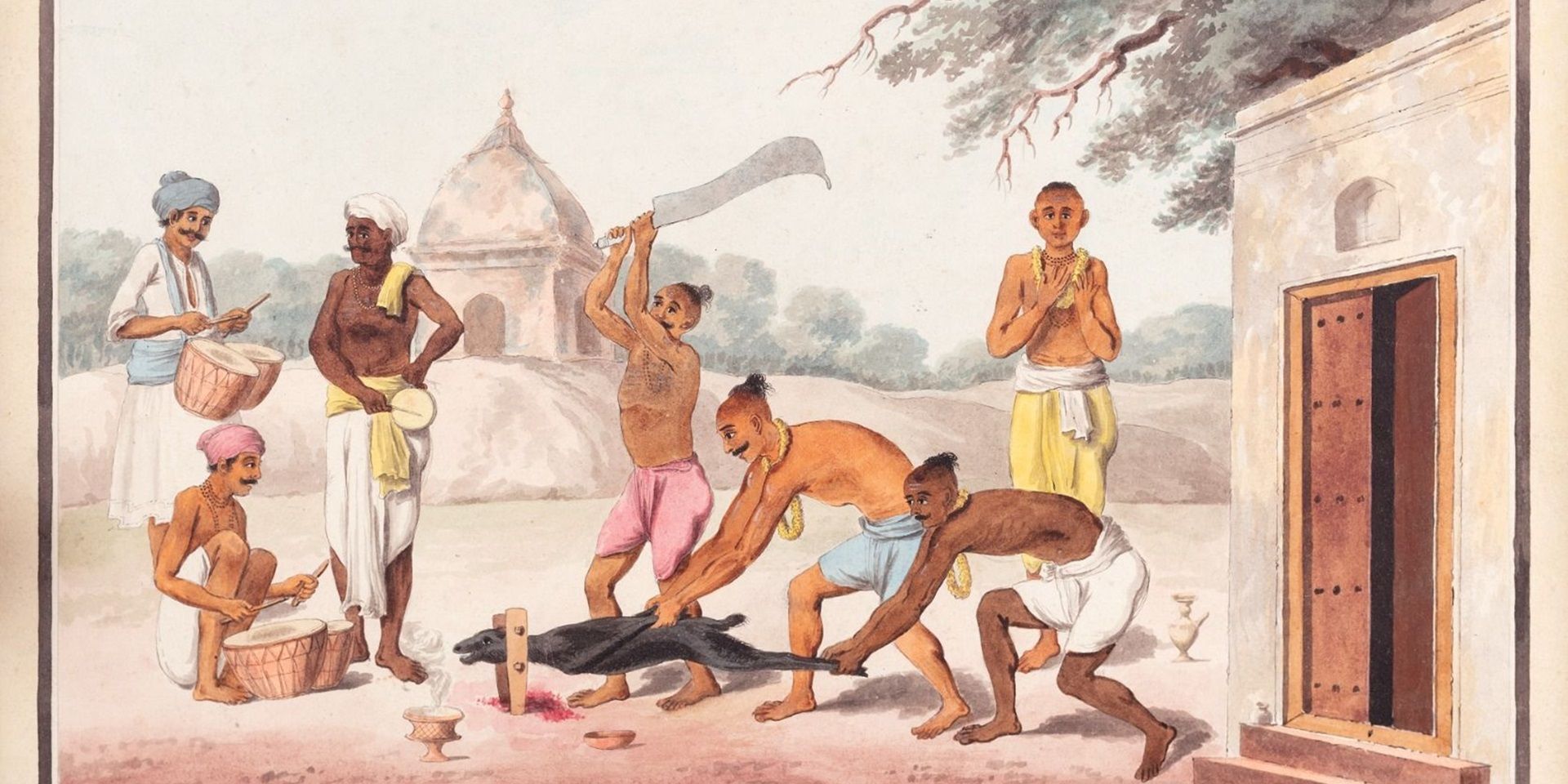
Conversations with Friends
Art of the Graft: A Conversation with Holly Shaffer
Ankan Kazi and Bhagyashri Dange
June 01, 2025
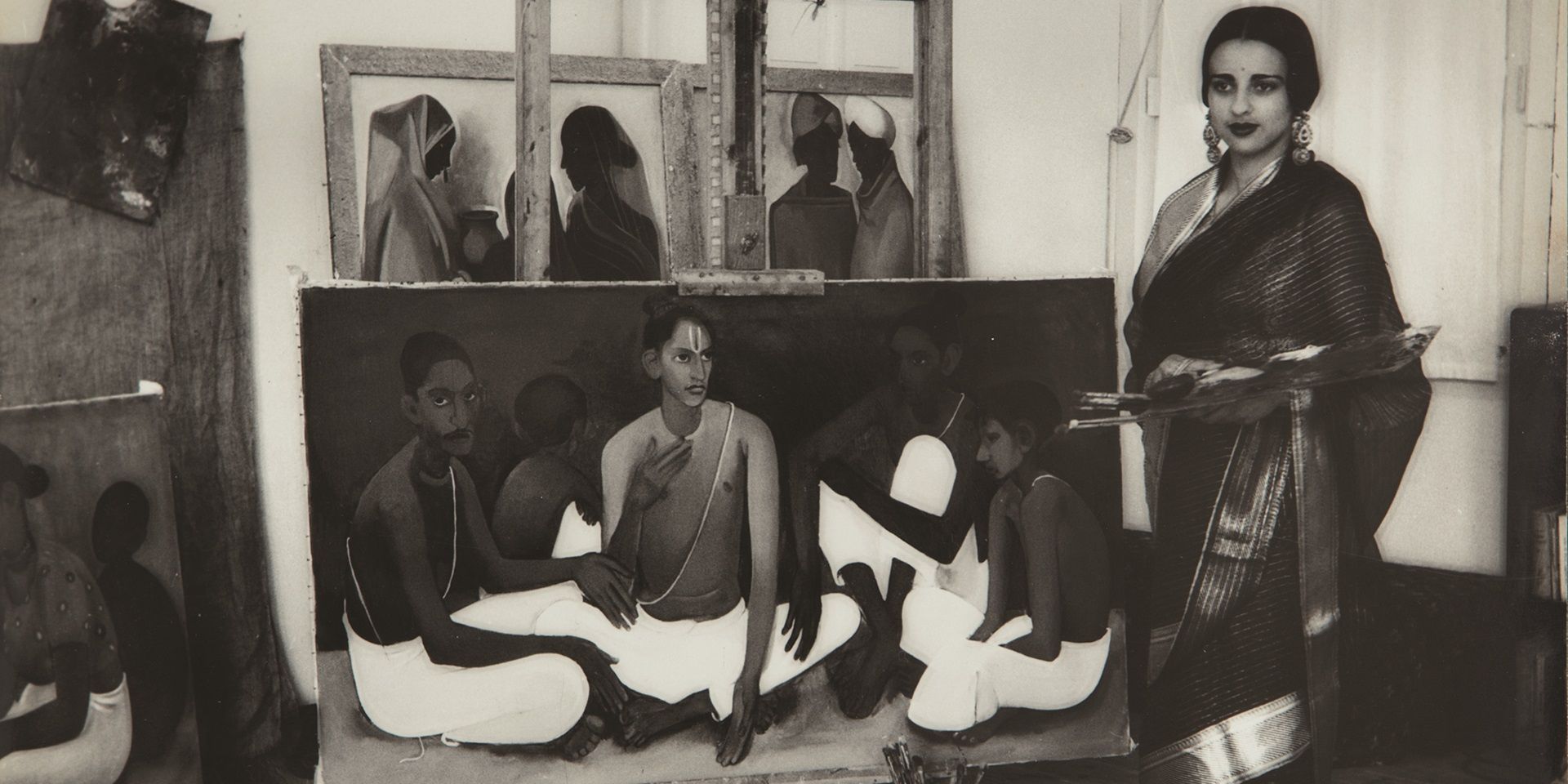
Conversations with Friends
Anita Vachharajani on Writing about Art for Children
Ankan Kazi
June 01, 2025





